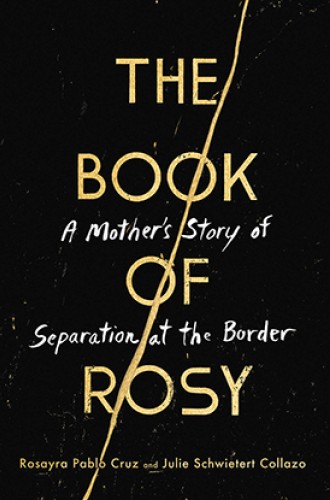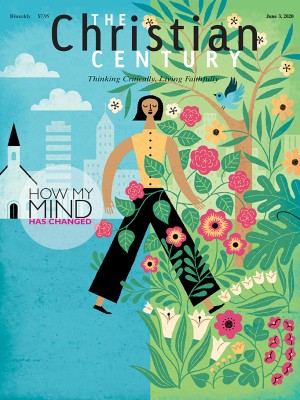How asylum seeker Rosayra Pablo Cruz got her children back
Pablo Cruz and Julie Collazo tell a story from the migrant detention crisis.
An evangelical Christian asylum seeker and a lapsed Catholic activist join forces to tell a story of family separation in The Book of Rosy, which is available in English and Spanish editions. While the story focuses on Rosayra Pablo Cruz, the Rosy of the title, coauthor Julie Collazo plays a key role after Pablo Cruz travels from Guatemala to the United States and is separated from two of her children at the border.
The book opens with Pablo Cruz hearing her name called at the Eloy Detention Center in Arizona, where she has been incarcerated without her sons. Her visitor is a lawyer named José Orochena. He tells Pablo Cruz about a group of New York mothers who have raised money to secure release and transportation to New York for asylum seekers who were separated from their children by a new “zero-tolerance policy.” This policy, which Pablo Cruz did not know about when she left Guatemala, went into effect ten days before she crossed into the US.
Read our latest issue or browse back issues.
After the opening scene in the jail, the book flashes back to Guatemala, about which Pablo Cruz writes, “almost everyone has lost someone they love to murder. We are a nation whose ghosts hover in the air around us, a country of walking dead.” Pablo Cruz’s husband was murdered in 2008 when she was pregnant with their third child. His remains were placed in a niche and marked only by initials because she could not afford to have his entire name carved.
Pablo Cruz gave birth to a fourth child, and three years after her husband’s murder, she was shot twice and stitched up without anesthesia. This attempt on her life was clearly a targeted attack. After she prayed “please open a door for me,” a friend offered her money so she could make the trip to the United States with her youngest child, Fernando. Seeing the gesture as an answer to a prayer, she accepted.
“Among the many things that people don’t understand about migration is this,” Pablo Cruz writes. “No one wants to leave the people they love. . . . But since they know they are at risk, they put one foot in front of the other and try not to look back.” Pablo Cruz arrived safely in the United States and stayed for a time, working in a factory outside of Chicago. Eventually she and Fernando returned to Guatemala to rescue her teenage son, who she believed was in serious danger from gang violence. At the end of the second harrowing journey, she was captured by border patrol while crossing a canal, incarcerated, and separated from her children.
A little more than halfway through the book, the point of view changes to that of Collazo, a former social worker who left the nonprofit world “disillusioned by limitations” and worked for many years as a writer, editor, and translator. Collazo, married to a Cuban refugee, was particularly stirred by images of families separated at the border. After hearing Orochena speak on the radio, she came up with a “wild idea” to help post the bond for one of his clients—a mother who had been separated from her children—and to bring the mother to New York, where her children were in foster care.
Riverside Church in New York City sprang into action, helping with donations. Other mothers helped map out a route from Arizona to New York through a network of volunteer drivers. Remarkably, the plan worked. Orochena, who specialized in DUI law and found himself dipping into immigration law when he saw what was happening at the border, asked Collazo if her group could do it again. “You’re some crazy, bad-ass ladies,” he said. This was the start of the nonprofit organization Immigrant Families Together.
After the group’s initial success, Collazo heard about Pablo Cruz and decided to help work toward her release. Collazo writes about how the release process unfolded. She also describes some of the challenges that occurred after Pablo Cruz and her sons were reunited after spending months apart. The older boy missed his foster mother, and it was hard for him to give up his role as the primary caregiver for his younger brother. When the book returns to Pablo Cruz’s perspective, she writes about how unprepared she was for feeling anything other than elation after being reunited with her children.
Faith is sprinkled throughout the book. Pablo Cruz, an evangelical Christian, takes comfort in her personal relationship with God, repeatedly seeking and finding signs. Collazo, raised Catholic, finds herself struck by the beauty of faith, especially through a Jewish congregation that throws itself into this cause. Collazo writes about the Hebrew word hineini, “here I am,” and how important showing up is in the process of reuniting families. The two women also draw on the Jewish concept of tikkun olam, which is commonly translated as “repairing the world.”
As an asylum seeker, Pablo Cruz was not permitted to work until filing for asylum. She writes, “This is the immigrant experience I wish people could see . . . we’re not waiting for a handout. We want to be part of your American dream.” It’s this kind of clarity that makes The Book of Rosy such compelling advocacy writing.
A version of this article appears in the print edition under the title “A story of separation.”







